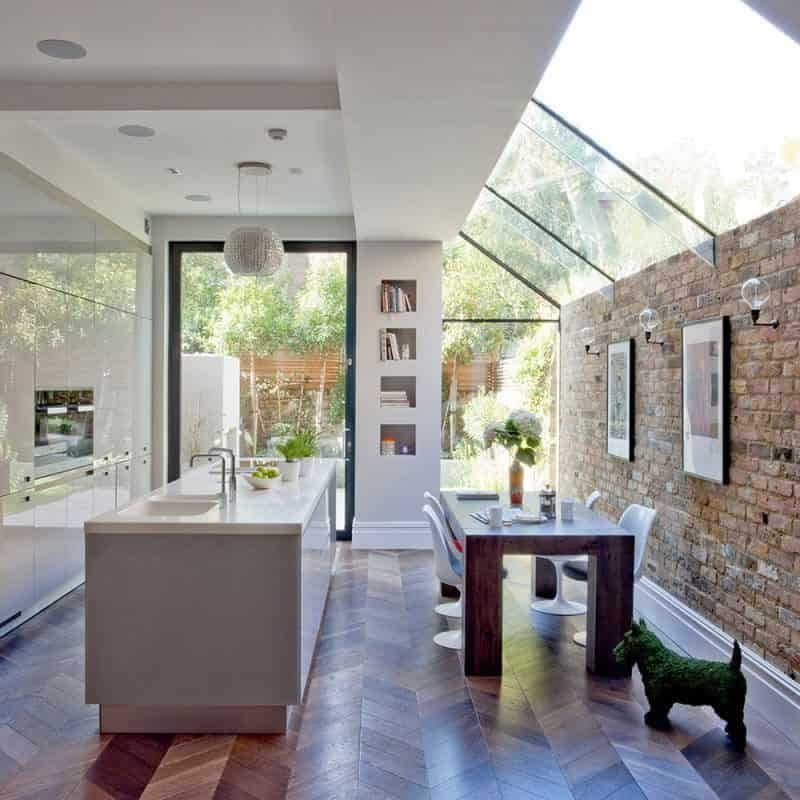Flexible Finance Options - Buy Now Pay Later (12 months Deferred Payments) or 12 Months Interest-Free
Find Out More‘When should we put the heating on?’ and ‘how high up should we turn the heating?’. These are the questions that follow us throughout the whole of Winter. With rising energy prices, and the pressing necessity to drive down our carbon emissions, these questions are getting harder to answer.
The average UK home temperature is between 18 and 21 degrees Celsius. During Winter, UK citizens typically use their central heating systems for 8 hours a day, usually split into two periods. Heating usage peaks at 7am and 7pm, when people are leaving for and returning from work. This is what we’ve grown used to, but is it the more sustainable way of living? We’ll be covering everything surrounding home temperature, including:
- The cost of central heating in the UK
- Central heating’s effect on climate change
- Tips and solutions for lower energy usage, including new windows, new doors and new conservatories
But first thing’s first:
What temperature should my home be during Winter?
18-21°C is the recommended room temperature range from the World Health Organisation (WHO). They state that, for the average healthy person, this is the optimum, comfortable temperature. Going too far above or under can actually lead to health problems:
Above 24°C – dangerously warm, with risk of heart disease or strokes
21-24°C – mild discomfort
18-21°C – ideal climate for humans to live in
16-18°C – mild discomfort, vulnerability to colds and other minor sickness
12-16°C – risk of causing breathing problems
9-12°C – dangerously cold, with risks of heart disease and strokes
Under 9°C – dangerously cold, severe risk of hypothermia if maintained for too long
Therefore, we are justified in keeping our homes at these temperatures. Of course, it also shows that the lowest temperature we should aim for, without sacrificing our health, is 18 degrees.

How much does it cost to heat a home in the UK?
On average, it costs £453.24* a year to keep a UK home warm (according to Ovo). This is despite our actual energy use going down in response to the climate crisis. Due to the economic impact of the pandemic, wholesale energy prices have been forced to increase, as have the accompanying energy taxes and levies.
However, this figure will not definitely apply to your home. The cost of heating a property will depend on a range of factors like:
- Its size
- The age of the property
- How the house is built and the quality of its insulation
- The geographical location of the property
A study from Moneysupermarket.com found that the UK spends an average of £3.34 per degree Celsius raised in the home. Unsurprisingly, London is the most expensive, costing residents £4.02 per degree. Meanwhile, Nottingham is actually home to the 3rd cheapest energy prices in the UK, weighing in at £3.05 per degree. The only cheaper places are Doncaster and Kirkwall on the Scottish archipelago of Orkney.
With this is mind, you could save a significant amount of money just by turning your heating down one degree. Energy Saving Trust agrees that just one notch lower on the thermostat could save you £80 a year.
*This sum only covers central heating costs and does NOT include things such as electricity or water bills.

Environmental impact of central heating
Gas prices have soared because of international demand that has increased during the pandemic. Without question, the impact of coronavirus has somewhat waylaid our path to carbon net zero emissions by 2050.
Shockingly, The Guardian reports that the millions of gas boilers in UK homes produce twice as much carbon as all the nation’s gas-fired power stations combined. Inventions like central heating and underfloor heating have caused our household emissions to sky-rocket since the 1960s. But without them, home temperatures could drop to a dangerously low 12°C during Winter. So, what is the answer? How can we keep our houses warm and our carbon footprint small at the same time?

Solutions for lower energy bills
There are a number of simple things you can implement right now to improve your home’s thermal performance.
- Turn down your thermostat – If you haven’t done so already, turning your heating down to 18°C can make a huge difference.
- Bleed your radiators – ensure that your heating system isn’t putting all that work in for no reason.
- Lay down more rugs – these can help your home to feel much warmer, especially if you have wooden floors.
However, for more effective, long-term results, it may be that you need to replace your windows, doors, or your conservatory glazing.
Invest in quality double-glazed windows
Outdated, single-glazed windows will be allowing swathes of heat to leave your home every minute. This is because they have much higher U-values. These measure the rate of thermal transmittance through a surface. The lower the U-value, the less heat is allowed to escape. If your windows are shedding heat, this could be causing your home to feel colder, even with the thermostat on 21°C. Under-performing windows could be what’s holding you back from dropping down to 18°C.
With a new set of double-glazed windows, you could save up to £110 a year on energy bills. Thankfully, Stormclad offer double-glazed windows in a range of materials. Authentic timber window frames offer outstanding natural insulation, while uPVC window frames offer astoundingly low U-values with minimal maintenance requirements. Even our aluminium, which has historically been a conductor of heat, has been thermally broken to prevent heat from escaping your home.

Install a replacement front door
The entrance door is another key area where heat loss occurs. This is especially likely if the door is past its use-by date, or was installed poorly. As with windows, Stormclad offer thermally efficient doors in a full range of materials.
However, for optimum thermal performance, the composite door is one of the strongest doors on the market. It boasts a 48mm thick frame, making it exceptionally difficult for heat to pass through and escape. This is due to a combination of the door’s thermally insulating timber core, and its robust thermo-plastic ABS skin.
Conservatory replacement
A poorly installed conservatory is just a vacuum that sucks all the heat out of your home. If you have a conservatory that’s so cold you barely used it, it’s likely that that’s what stopping you from turning down the thermostat.
All our modern conservatories exhibit the same exceptional thermal qualities as our windows. They’re installed with state-of-the-art SMARTGLASS®, which helps to control room temperature and prevent unnecessary heat loss.

Energy-efficient Windows, Doors and Conservatories across the East Midlands
Whether you live in Nottingham, Leicester or Derby, we’re here to help you reduce your heating usage. Even just half a degree less could significantly reduce your energy bills, your carbon footprint, and your vulnerability to illness. For more information on what we can do for your home, contact the Stormclad team today.
Related reads:
Do glass extensions get too cold or too hot in the UK?
Tips for insulating a conservatory roof
What is the main difference between a composite door and a uPVC door?